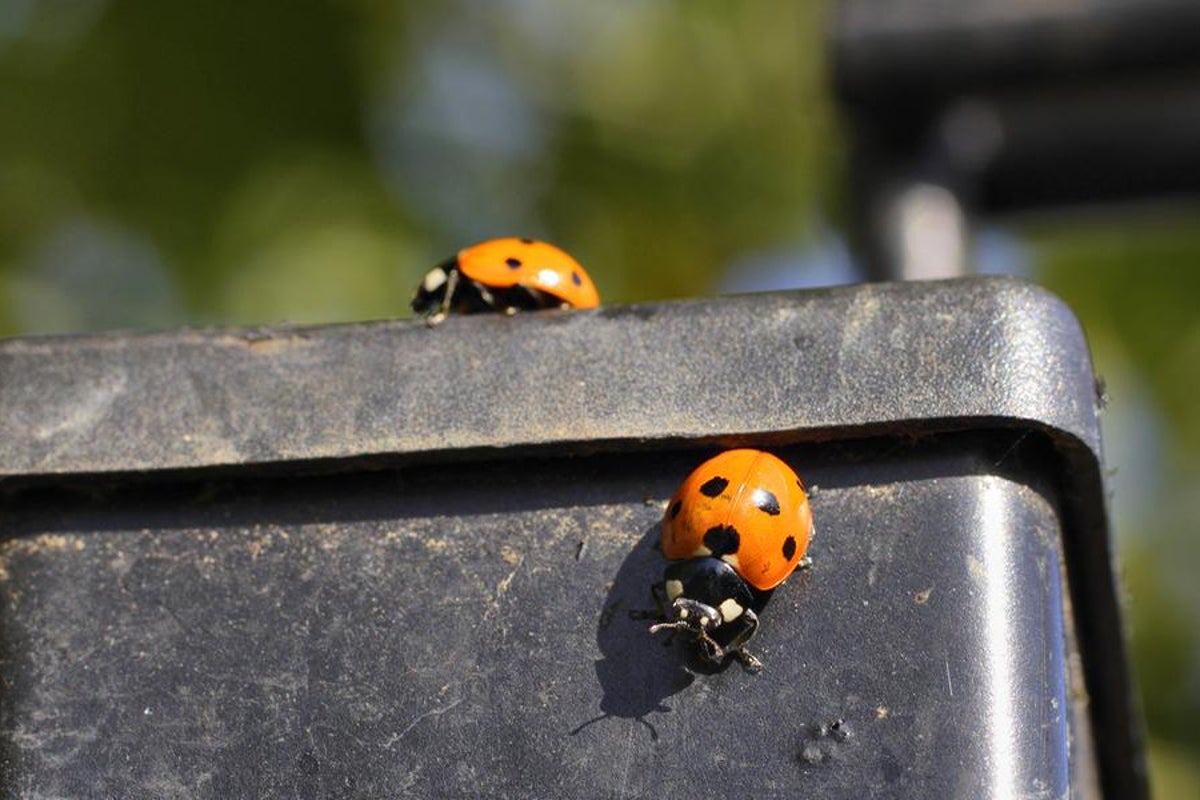Top Stories
Swarms of Ladybirds Invade UK Homes as Experts Explain Reasons

In recent weeks, an unusual number of ladybirds have been spotted entering homes across the United Kingdom, prompting concerns among residents. This surge in sightings is attributed to the warm weather experienced during the summer, which has created ideal conditions for the insects. Social media platforms have seen a flurry of posts from users reporting swarms gathering on windowsills and seeking shelter inside.
One homeowner shared their experience on X, stating, “My parent’s house has become a home for ladybirds. They seem to like bathrooms for some reason; it was like a swarm of them.” Another user expressed their surprise at the sudden influx: “What’s with all the ladybirds today? Never noticed such a lot around my house before. Hopefully, they don’t damage anything!”
Experts are advising the public not to panic. According to Tim Coulson, professor of zoology and head of biology at the University of Oxford, this phenomenon is a natural behaviour as ladybirds seek shelter before winter. “It is now the time of year when they are looking for somewhere to lay low over the winter,” he explained. “A nook in a house would be attractive.”
Ladybirds enter a state known as diapause during winter, akin to hibernation for insects. They significantly reduce their metabolism to conserve energy. In the wild, they commonly find refuge under bark or in piles of leaves, but sometimes they choose to come indoors. “Sometimes they might come into houses looking for a safe haven,” added Prof. Coulson.
Understanding Ladybird Behaviour
Ecologist and ladybird expert Professor Helen Roy from the UK Centre for Ecology and Hydrology explained that different ladybird species have preferred wintering spots. “For example, two-spot and harlequin ladybirds enter buildings, while seven-spots tuck themselves under leaf litter, and water ladybirds nestle into reeds,” she noted. This year, the number of ladybirds is particularly high due to the hot summer, which provided ample food for their primary prey: aphids.
Prof. Coulson elaborated on the connection between the weather and ladybird populations, stating, “It has been a good year for their prey, and therefore a good year for them.” The warm climate led to an increase in aphid numbers, thus offering ladybirds a more abundant food supply.
Dr. Peter Brown, an associate professor in ecology and conservation at Anglia Ruskin University, recalled a similar event in 1976, which he referred to as the last “boom year” for ladybirds. “In 1976, there were a lot of seven-spot ladybirds on the beaches as they searched for food, and people thought they were invading – they were not, as they are native to the UK,” he stated.
As autumn progresses, the presence of ladybirds in homes is expected to continue. While their sudden appearance may be alarming to some, experts emphasize that these insects are simply following their natural instincts to find warmth and safety before winter arrives. Residents are encouraged to remain calm and allow the ladybirds to find their temporary refuge without disruption.
-

 Health3 months ago
Health3 months agoNeurologist Warns Excessive Use of Supplements Can Harm Brain
-

 Health3 months ago
Health3 months agoFiona Phillips’ Husband Shares Heartfelt Update on Her Alzheimer’s Journey
-

 Science1 month ago
Science1 month agoBrian Cox Addresses Claims of Alien Probe in 3I/ATLAS Discovery
-

 Science1 month ago
Science1 month agoNASA Investigates Unusual Comet 3I/ATLAS; New Findings Emerge
-

 Science4 weeks ago
Science4 weeks agoScientists Examine 3I/ATLAS: Alien Artifact or Cosmic Oddity?
-

 Entertainment4 months ago
Entertainment4 months agoKerry Katona Discusses Future Baby Plans and Brian McFadden’s Wedding
-

 Science4 weeks ago
Science4 weeks agoNASA Investigates Speedy Object 3I/ATLAS, Sparking Speculation
-

 Entertainment4 months ago
Entertainment4 months agoEmmerdale Faces Tension as Dylan and April’s Lives Hang in the Balance
-

 World3 months ago
World3 months agoCole Palmer’s Cryptic Message to Kobbie Mainoo Following Loan Talks
-

 Science4 weeks ago
Science4 weeks agoNASA Scientists Explore Origins of 3I/ATLAS, a Fast-Moving Visitor
-

 Entertainment4 months ago
Entertainment4 months agoLove Island Star Toni Laite’s Mother Expresses Disappointment Over Coupling Decision
-

 Entertainment3 months ago
Entertainment3 months agoMajor Cast Changes at Coronation Street: Exits and Returns in 2025









